
6 minute read
SAPCA - 25 years
SAPCA TURNS 25
The Sports and Play Construction Association was founded in 1997 by a group of specialist sports builders. CEO Chris Trickey outlines how the organisation has grown over the past quarter of a century into a thriving industry body, representing the companies that design, build and equip the UK’s sports facilities.
Advertisement
CEO Chris Trickey joined SAPCA as its first employee in 1997
The 25th anniversary of the Sports and Play Construction Association (SAPCA) this year is a reminder of how quickly the last quarter of a century has passed by. In 1997, when SAPCA was launched, Tony Blair replaced John Major as PM, the first Harry Potter book was published and Titanic hit our cinema screens. In sport, Pete Sampras won at Wimbledon, Paul Gascoigne was still scoring goals for fun and Mike Tyson decided to snack on Evander Holyfield’s ear during their heavyweight title fight. The internet was a relatively new thing and it would be another decade until social media really took off.
Setting up
The foundations of SAPCA were laid when a small group of specialist sports builders joined forces to create a new trade organisation for the industry. It came about through the amalgamation of two separate, smaller associations that had been running since 1986; the Tennis Court Constructors’
Federation and the Synthetic
Sports Surfaces Association, the latter mainly comprising builders of pitches and tracks. The rationale for launching
SAPCA was to create an organisation through which specialist companies could collaborate to promote high standards for the design and construction of sports and play facilities and to work more closely together. While the association has evolved and expanded, this same core purpose remains the same today – 25 years later.
The founding members were mainly specialists in outdoor synthetic sports surfaces. While surfacing remains at the core of SAPCA, that core has evolved as the range of companies and specialisms represented by SAPCA has grown. Today, it also includes natural sports turf, indoor sports floors and play surfaces.
In its early years, the initiative was driven by people from across the industry – such as Charles Lawrence, SAPCA’s first chair. The organisation was formed as a nonprofit company, with a board of directors elected by the first member companies.
I joined as SAPCA’s first employee – my first task being to register the company – having previously worked for 10 years at the Lawn Tennis Association (LTA). I had helped deliver the LTA’s facility programme, through which I had worked with many founding members of SAPCA.
The early expansion of SAPCA’s membership base saw a much wider range of companies join, including a diverse range of contractors, such as specialists in maintenance, lighting, fencing and indoor structures. A new group was also created for manufacturers and suppliers, as well as a Professional Services Group to represent consultants and test laboratories. Sports councils and sports governing bodies also joined as affiliate members.
growing strong
SAPCA’s expansion led to a subtle but significant name change, to the Sports and Play Construction Association. This greater

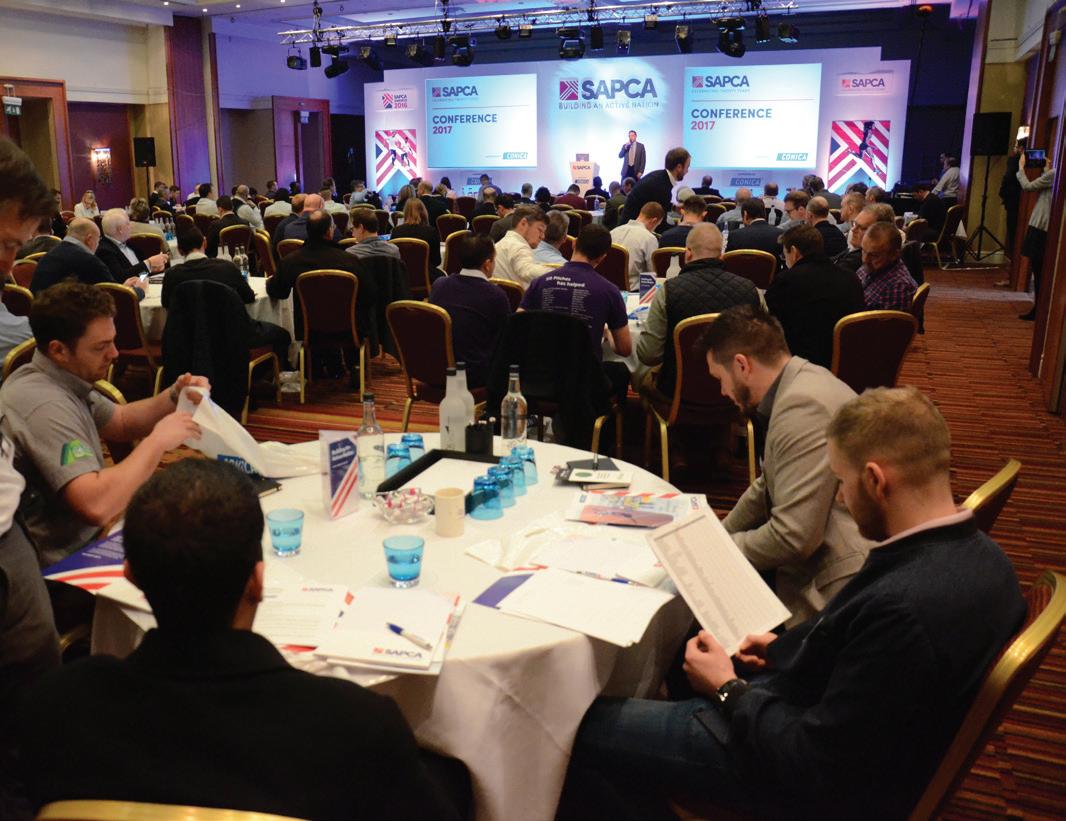
breadth of interests and activities brought with it important benefits, such as a wider range of technical expertise to draw on. It also improved opportunities for developing working relationships between members.
The combined membership of SAPCA now stands at more than 200 companies and organisations. It underlines that, throughout the last 25 years, the association has maintained its original approach of being inclusive, rather than an exclusive “club”. However, while any relevant company may apply for membership, admission – and continued membership – has always been based on an ability to meet strict membership criteria. The fundamental prerequisites for membership are a company’s expertise and experience, in-house knowledge and an ability to maintain high standards of performance and conduct.
These criteria underpin the credibility of the “SAPCA Member” badge as a stamp of approval in the sports and play marketplace.
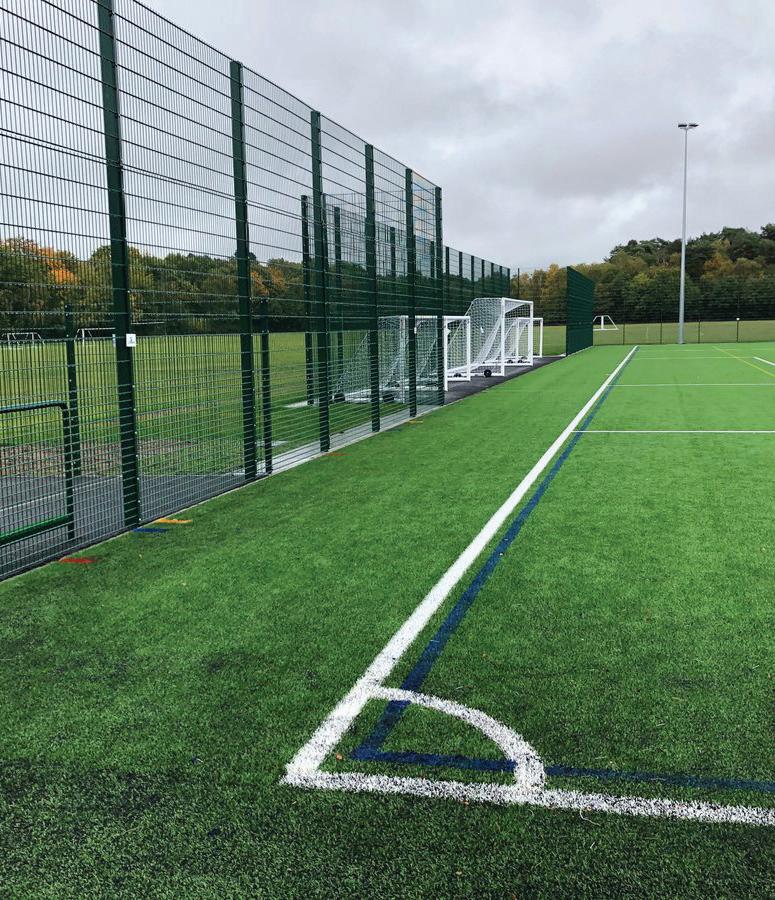
SAPCA organises a number of industry events throughout the year
SAPCA’S CODES OF PRACTICE AND RANGE OF GUIDES HAVE MADE A SIGNIFICANT CONTRIBUTION TO THE IMPROVEMENTS IN SPORTS AND PLAY FACILITIES IN THE UK
SAPCA members specialise in the design and construction of sports and play facilities

One of our most important current projects this year is the relaunch of the SAPCA Quality System, which embraces all key aspects of what it means to be a SAPCA member and reinforces the benefits of choosing SAPCA member companies for projects. This ranges from the membership criteria to compliance with the industry’s standards, and from the association’s annual inspection programme to our technical mediation service.
Networking opportunities are among the benefits of being a SAPCA member Continued growth
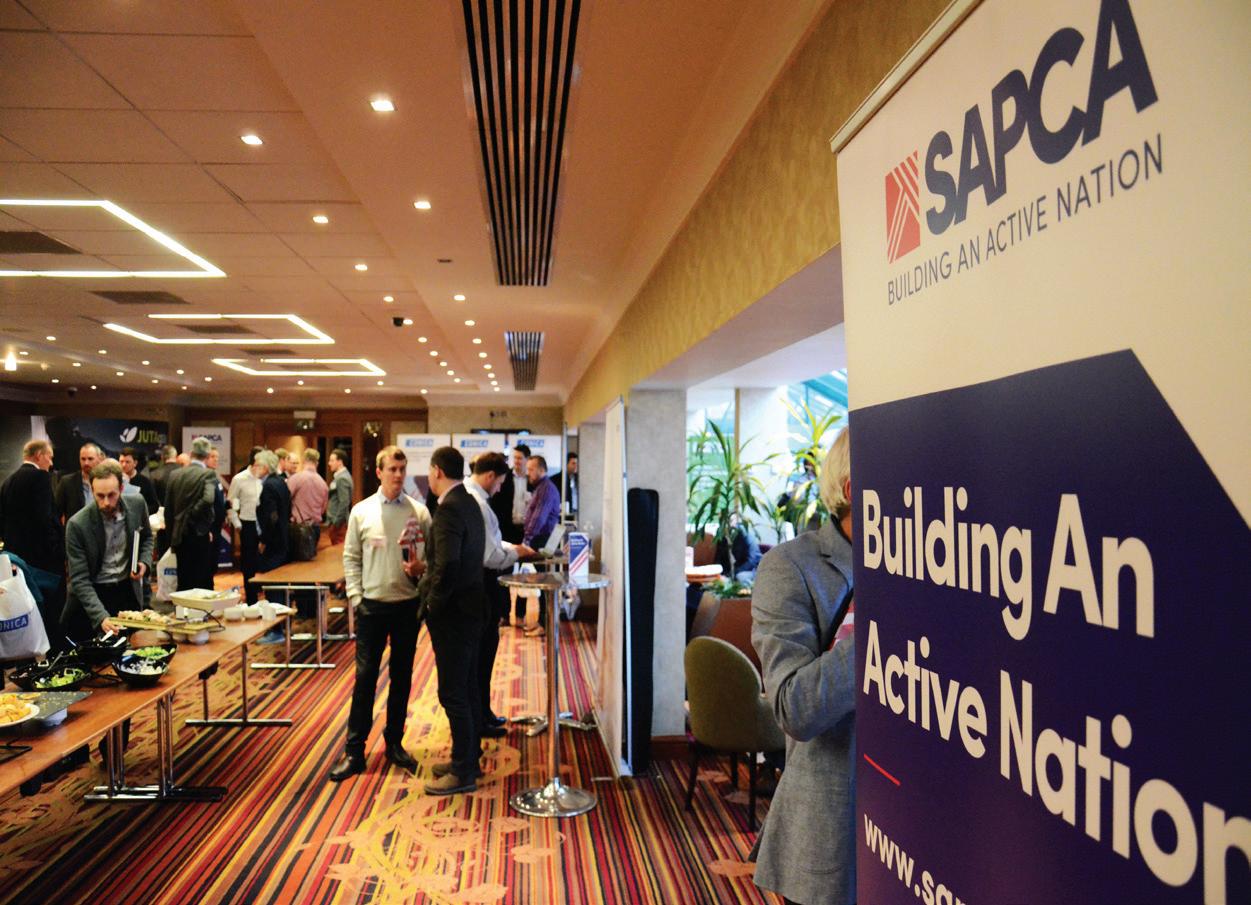
SAPCA’s activities have grown significantly over the last 25 years, whether it is the work of the technical programme and the creation of impartial guidance, the delivery of industry events, or the collaboration with stakeholders and partners and representing members as the unified voice of the industry.
There can be no doubt that SAPCA’s many Codes of Practice – for the design, construction and maintenance of different types of facility – together with the ever-expanding range of guidance, have made a significant contribution to the improvements in sports and play facilities over the past 25 years. While there will always be an important need to create standards and to produce helpful guidance – in order to support those who are developing facilities and delivering projects – the industry is also now playing an important role in driving innovation and change, such as in response to the needs for environmental sustainability.
This is very much top of the agenda for SAPCA’s new environmental sustainability working group, as we work towards new solutions and share best practice in key areas such as facility design, recycling processes and maintenance techniques.
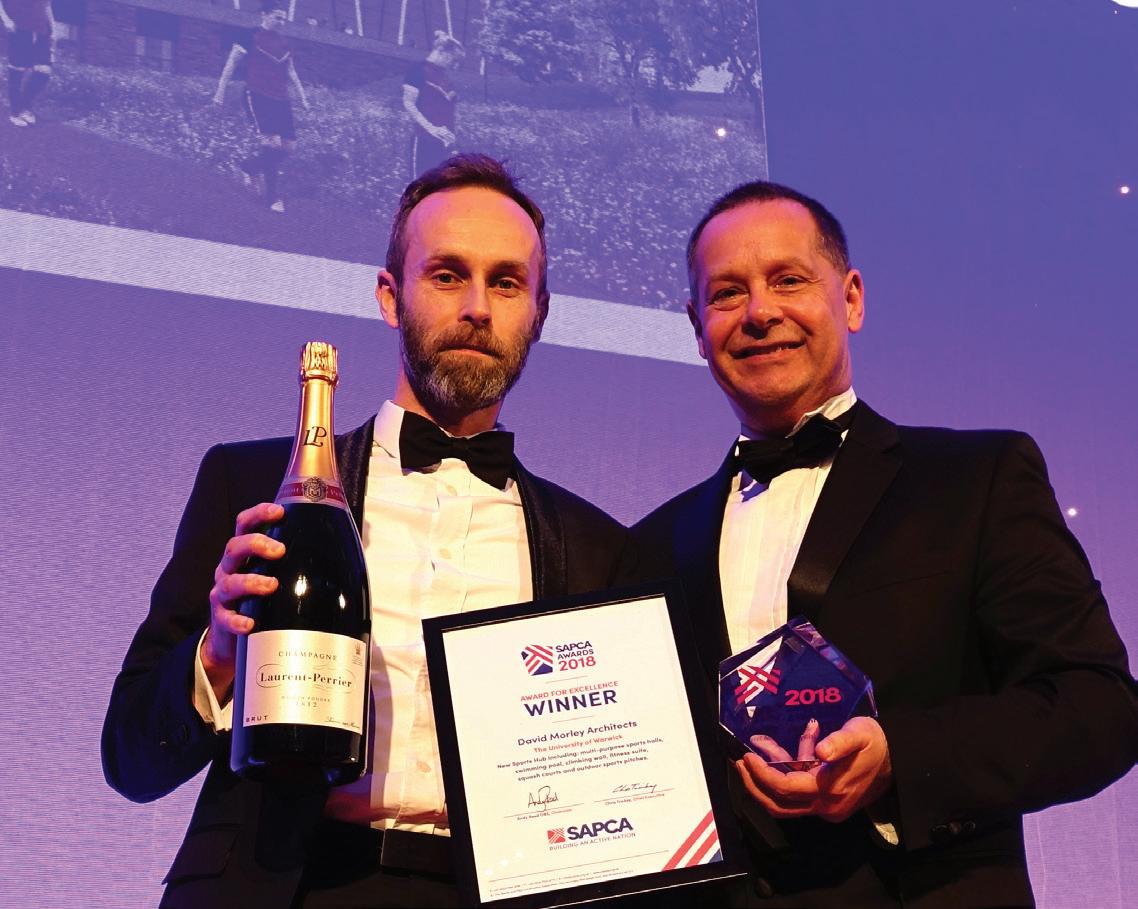
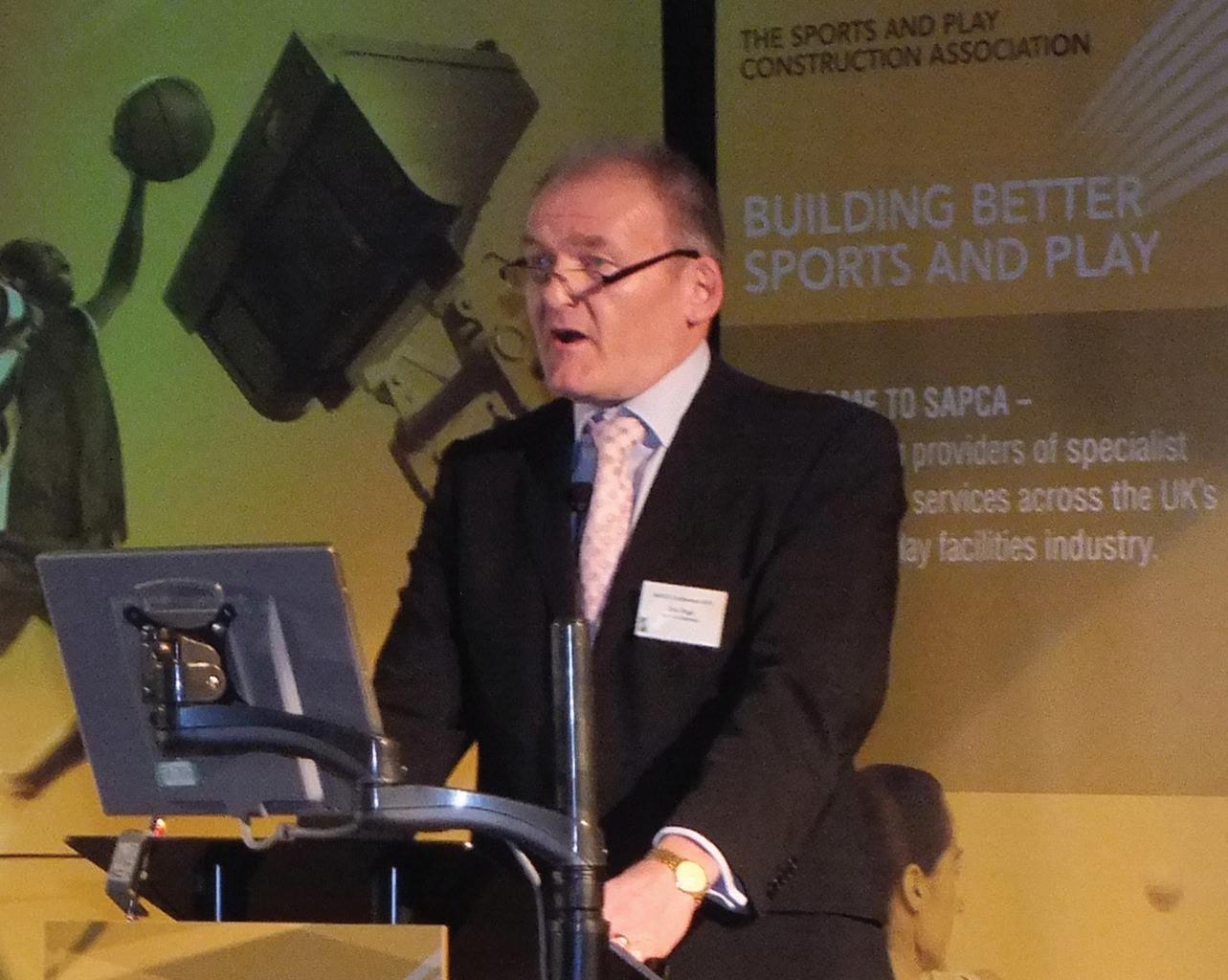
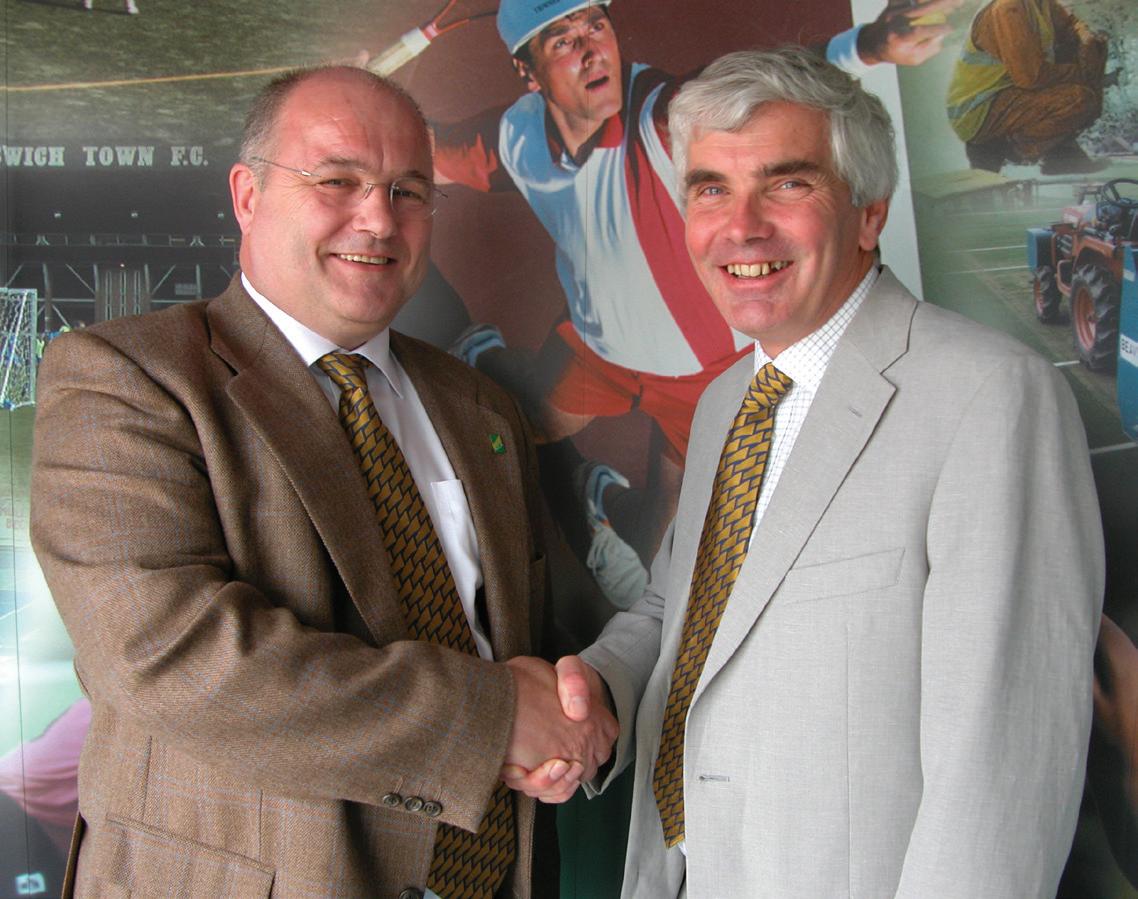

SAPCA THROUGH THE YEARS
A number of chairs have served the association throughout the years: top left - Charles Lawrence (middle); top right - Peter Wellington (left) and Tim Freeman; bottom left - Eric Page; bottom right - Andy Reed (right)
resilience
Since the pandemic began last year we have often spoken of being in a period of change, whether that is the change taking place in the marketplace, the industry, or within SAPCA itself. Reaching the milestone of the 25th anniversary gives a reason to reflect on what SAPCA has achieved in that time, but more importantly it is an opportunity to plan how the association can build on these foundations and create a stronger organisation for the years ahead.
When the industry meets for the SAPCA Conference and Annual Dinner at St George’s Park national football centre in May, as well as celebrating SAPCA’s anniversary it will be the occasion to present the new strategy for how the association will change and progress over the next five years. This will include developing the benefits and services for SAPCA members, supporting those working across the SAPCA community and strengthening the association’s important role within the sports and play facility marketplace.
With the prospect of significant new funding for sports facilities in 2022, there is much to look forward to. There may be challenges and frustrations, but it’s important always to remember that what the industry provides in high quality sports and play facilities is of enormous value – as an essential part of so much sporting enjoyment and success, at all levels, and as a vital contribution to society and the health of the country as a whole. ●



